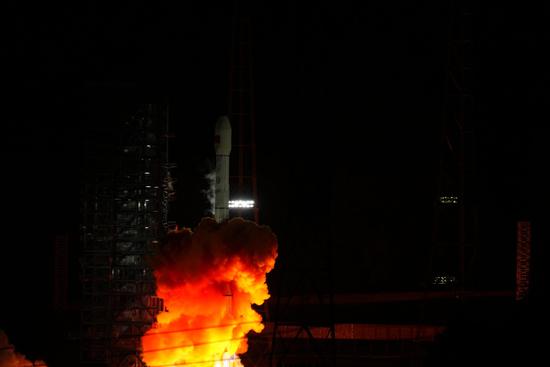(ECNS) -- Regarding foreign military vessels and aircraft entering China’s jurisdictional sea areas and surrounding airspace, the Chinese military follows and monitors the situation based on international practice for safety and security, said a think tank report.
Report on the Navigation and Overflight Situation in the South China Sea was released by the think tank South China Sea Strategic Situation Probing Initiative (SCSPI) at the end of September 2024.
According to the report, in recent years, the U.S. military has become increasingly aggressive in its close-in reconnaissance against China in the South China Sea, frequently approaching the airspace of the Chinese mainland, including the Hainan Island, and constantly decreasing the distance of its approaches to China’s coast.
It revealed that about one hundred aircraft sorties approach the airspace of Chinese Mainland and Hainan Island every year, most of which fly to less than 30 nautical miles from the baseline of China’s territorial waters.
Repetitively emphasizing that its military can operate anywhere permitted by international law, the US never considers the impact of these actions on the security of other countries, the report said.
It pointed out that in the waters and airspace of the Exclusive Economic Zone, normal close-in reconnaissance is disparate from the so-called close-in reconnaissance that is too close or suspected of entering territorial waters or airspace, and that the latter is a provocative operation that seriously threatens the sovereignty and security of relevant countries.
Especially in the air, due to the high speed of modern aircraft, reconnaissance flights that approach too closely to the airspace of other countries (less than 10 nautical miles) can easily lead to misjudgment. Regardless of the criteria, it is no longer a matter of freedom of overflight, it noted.
According to the report, friction between foreign military forces and the Chinese military in the South China Sea primarily involves three specific areas and one type of specific operation, i.e. the following 4 scenarios: first, when foreign forces approach the Chinese mainland or Hainan Island territorial waters and airspace, the Chinese military responds vigorously, employing actions including interception and pushing outwards; second, when the U.S. military enters the territorial waters and airspace of Xisha Islands for so-called “freedom of navigation operations”, the People's Liberation Army (PLA) issues warnings and conducts expulsions; third, when foreign forces enter within 12 nautical miles of Chinese-controlled features in Nansha Qundao (the Nansha Islands) and Huangyan Island, the PLA issues warnings and expulsions; fourth, when foreign forces excessively approach or intrude into PLA military exercises, including live-fire ones.
In the South China Sea, air, and maritime encounters between military forces of different countries occur frequently, especially between China and the U.S., with over 10 encounters daily and thousands annually, but the majority are professional and safe, it said.
Some foreign militaries often complain about being intercepted by Chinese forces, portraying the South China Sea as restricted and unsafe, however, they conveniently avoid discussing essential information such as the specific locations of encounters and the reasons behind such incidents, clearly indicating a biased narrative, said the report.
“If their roles were reversed, any country facing challenges similar to the scenarios above would take decisive measures, with countries like the U.S. responding even more assertively than China has,” it added.


















































 京公网安备 11010202009201号
京公网安备 11010202009201号